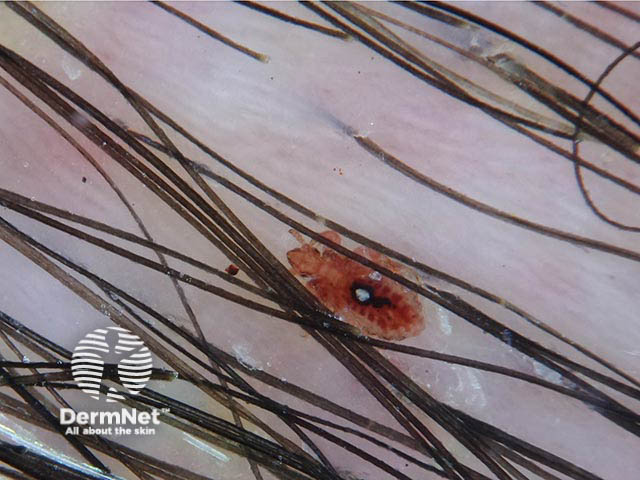Main menu
Common skin conditions

NEWS
Join DermNet PRO
Read more
Quick links
Infestations Diagnosis and testing
Author: Dr Ahmed Sadek, Cairo Hospital for Dermatology & Venereology (Al-Haud Al-Marsoud), Egypt. May 2022.
Contributors: Dr Dalia Hossam, Dr Radwa Magdy, Dr Nehal Saied, Dr Noha Hashem, Dr Safaa Yehia Negm, Dr Moshera Saied El Bahrawy, Dr Amira Ragab, Dr Amal Wagih, Dr Haidy El-Hussieny, Dr Mona Ragib, Dr Hala Amer. Copy edited by Gus Mitchell. May 2022
Pediculosis capitis (head lice) occurs with an infestation of the scalp hair with the human head louse (Pediculus humanus capitis), an external obligate parasite that inhabits the scalp and feeds by sucking blood. Any age may be affected, however it is most prevalent among schoolchildren.

Dermoscopic image of a female child with pediculosis showing the parasite, Pediculus humanus capitis

Dermoscopic image of female child with pediculosis showing dark brown viable nits attached to the shaft (yellow circles) and translucent hatched nits (red circles)
Scabies is a parasitic infestation caused by the mite Sarcoptes scabiei var hominis. It usually only affects the scalp of the newborn and those that are immunocompromised, showing the Norwegian or crusted form of scabies where the face may also be affected. Scabies infestation produces diagnostic burrows; the tunnel dug by the female Sarcoptes mite, in the host’s epidermis, to lay her eggs.
These features are best seen with higher magnifications: